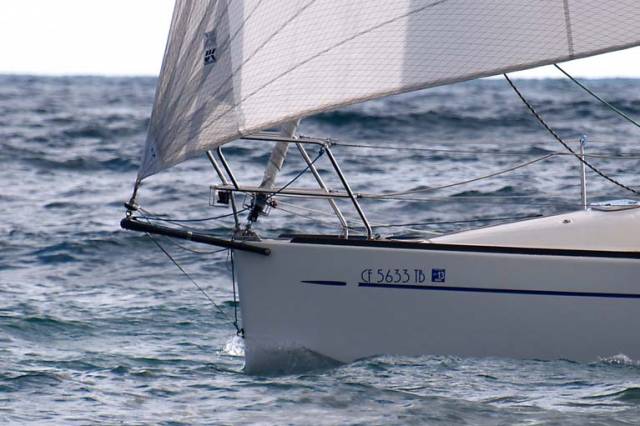Up to about 15 years ago, most boats were designed with big overlapping headsails, which were still pretty useful when reaching because of their size. Then it became evident that this set up was not that efficient and trying to manage very big Geneos was difficult and needed a lot of grunt to tack them. Also, the IRC rating rule seemed to be more advantageous if you reduced your headsail size to the same as the foretriangle. Barry Hayes of UK Sailmakers Ireland reports.
Boat designers then all started designing their boats with these smaller headsails which were excellent upwind, but it became evident that reaching in lighter airs was an Achilles heel for them.
The loss in power when you’re reaching with a non-overlapping headsail became a problem, so to address this issue, Code Zeros were developed. The big difference is you can normally put up 3 times more sail when you hoist a Code zero, compared to reaching with your non-overlapping Jib.
"You can put up three times more sail when you hoist a code zero, compared to reaching with your non-overlapping jib"
You will likely have seen code zeros on fast offshore yachts such as the Volvo 65 ’s, IMOCA 60’s and others. However, these Code zeros are not restricted by IRC rules. IRC imposes a restriction on these code Zero sails which means to count them as a Spinnaker the mid girth must be at least 75% the size of the foot. If you don’t have this, it is counted and rated as a Jib, which would be punitive for your rating. So all the sail designers have engineered the Code zeros to comply with this rule, and recently they have become much more efficient than they used to be.
In years gone by they were flappy leeched sails, that were not that efficient. Now technology in sailcloth and with better design, they can be made to virtually look like a Jib, but still, they are rated as a spinnaker.
As I mentioned above, it is generally used in lighter reaching conditions, when it is too tight an angle to hoist even an Asymmetric spinnaker. A code zero in 5 or 6 knots at a 50 to 70 degree wind angle is an absolute weapon, and if you find yourself in these conditions, and don’t have one of these, expect to see boats come over the horizon behind you and sail right past you, perhaps doing as much as 2 knots or more extra speed. A Code zero can also be used in more wind when the wind angle is a bit wider and can take the place of a reaching Asymmetric.
A code zero, in many conditions, can virtually go as High as a boat with just a jib. What happens is, say you are going nearly upwind in 5 or 6 knots, you may be doing just 4 knots with your jib, and because you are not going that fast your wind angle is a bit wide. You hoist the Zero. Initially, you have to foot off 15 or so degrees to fill it, get the power in the boat and this, in turn, heels the boat more. That allows you to get your crew on the weather side. The boat speeds up. Now you may be doing 5.5 knots or more and your apparent wind is increasing. This allows you to put the bow up a bit and pretty soon you are nearly doing the same course as before you set the zero, but at maybe 30% more boat speed. This is why virtually every competitive racing boat that sails offshore has a code zero in its inventory.
"Most IRC yachts are rated with three or four spinnakers so choosing which sails to carry for offshore races can be an issue"
Most IRC yachts are rated with 3 or 4 spinnakers so choosing which sails to carry for offshore races can be an issue. Generally, most yachts will include a Code Zero, if they have one, if the wind strength is looking lightish. If it is looking like a windy race, perhaps a small asymmetric might be selected in its place.
For boats over 35 feet, you need a top-down furling system, this is to reduce the load on the furling line when you are furling and it also gives you a very tight furl.
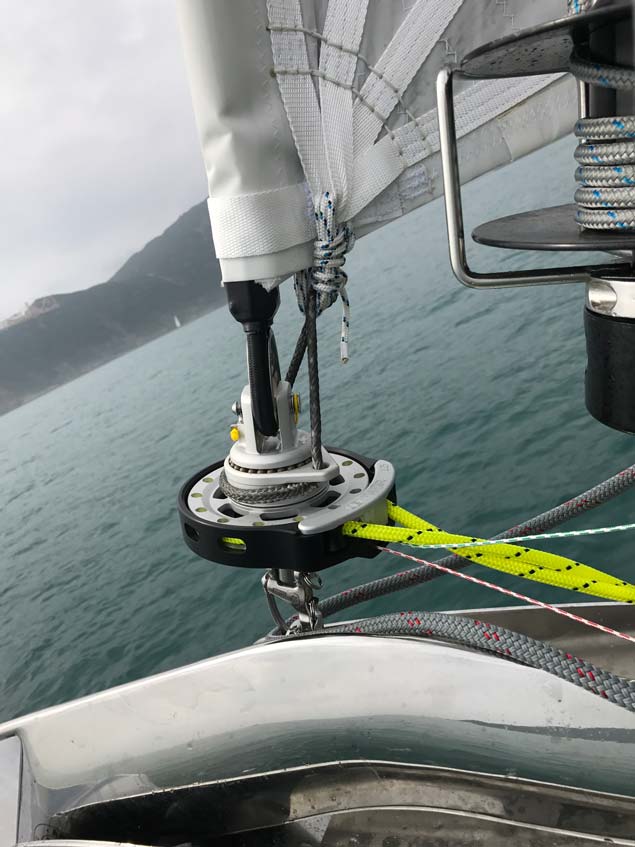
Top-down furling means (above) the tack of the sail is attached to the floating swivel in the furler, so the cable turns and the tack stays still until the first bit of the head is taken onto the cable, then the tack takes up when the body of the sail starts to furl in. This tight furl means you can leave the sail hoisted whilst sailing. As you’re just spinning the cable the load on the furling line is only half that of direct furling, so it’s quick and easy to pull. One person can do this easily.
For boats under 35 direct furling is faster and easier as the loads on the sail are a lot less. So you can get the sail furled up easily.
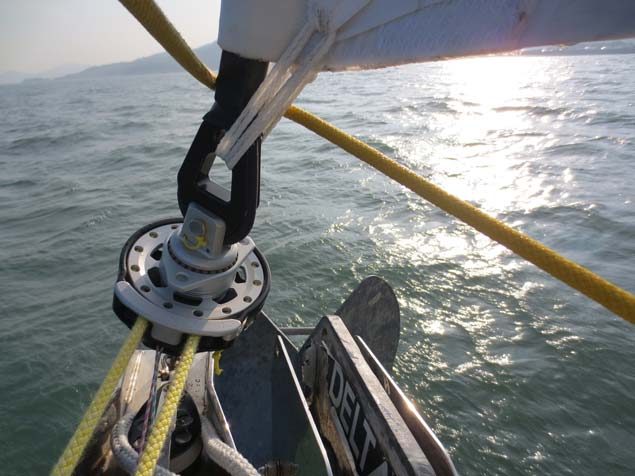
The tack of the sail is attached directly to the cable (above), so when the cable spins the sail is furled directly onto it. Note with this system you’re spinning the top and bottom of the sail at the same time. The body of the sail as its fuller doesn't furl up as tightly as the top-down system. This is the main difference between the two systems.
In this video (below) you can see a top-down furling gennaker.
You can see the head of the sail furling onto the cable while the tack stays free. So the main body of the sail is furled up giving a tight furl on the cable.
In the second video (below) you can see the tack stays still until the body is on the sail is on the cable and then the tack takes up.
Now the difference for direct furling is in (above), you can see the tack and the head of the sail furl right away. Its faster for a smaller boat to do it this way. But the furl is a lot thicker and not as clean.
With a top-down furling code zero you will never get a twist in the system. As it will just back out the way it went in.
"With a top-down furling code zero you will never get a twist in the system"
The cable and the furler you use in these systems are the most important part of the system. Some furlers can cost more than the sail. They may also not do what they say they can do. It’s always best to buy a furler that has a top-down option on it so your furler can do top-down and direct furling.
The best value for money is the Ubi Maior furler. This furler comes with a ratchet lock and top-down option. The ratchet lock means you can stop the furler, open and close the furl at any point with the quick and easy ratchet trigger.
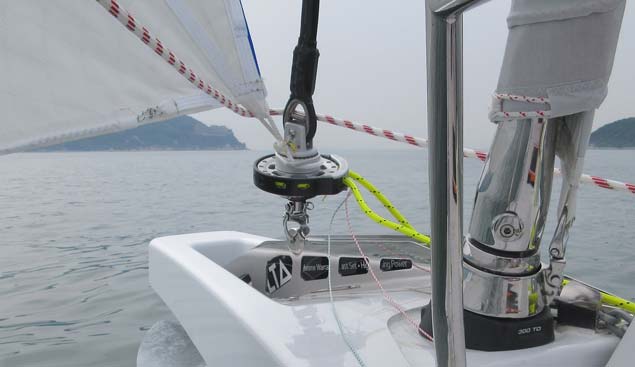
The cable has to be a torsion cable. Now there are lots of these on the market. Only 10% of these do what they say on the box. Most are just ropes that are called torsion cables.
If you turn the cable at the bottom then the top should turn at the same time. This is an anti-torsion cable. We normally recommend Hampidhan Dynex Pro Furling cable. This is great value and does exactly what it says on the box. If you turn the bottom and the top is furling there and then there is no slack in the system.
Halyard tension is a common question. How much tension does the cable need to furl? With a proper cable then you can use it with low or high tension. If you’re using a rope cable then it needs to be bar tight for the system to work. For example, if it’s not tight then the cable can twist and tear the sail. With a Hampidhan Dynex Pro Furling cable, for example, you can have the halyard soft or hard and still furl the sail away without any issue.
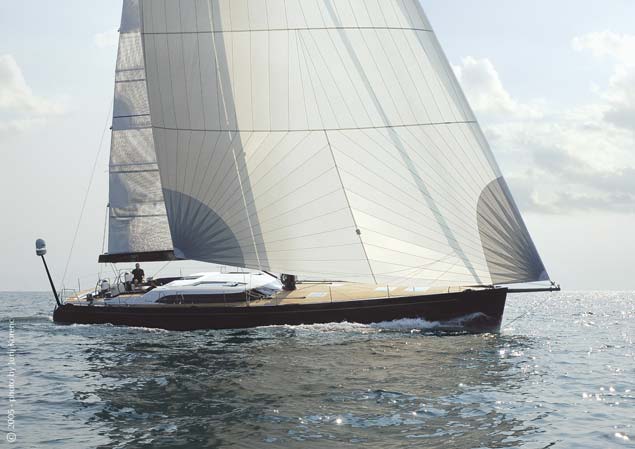
The furling line I normally like to have it in a colour that you can see in the dark, a bright colour is always good for night racing. For racing boats the furling line comes to the shrouds or the mast and is stored out of the way.
When racing I leave the code zero plugged in before the start of the race. So the furler and sheet is on the sail clipped on the bow and the sail is stored down the hatch ready to go so you just need to attach the halyard. It's best to hoist the sail before you leave the dock get the lines set up and cleared away ready for the set. You always hoist and drop the sail on the windward side using the headsail to get the sail up and out into the air.
Below is a good example of the polar angles of the Code zero.
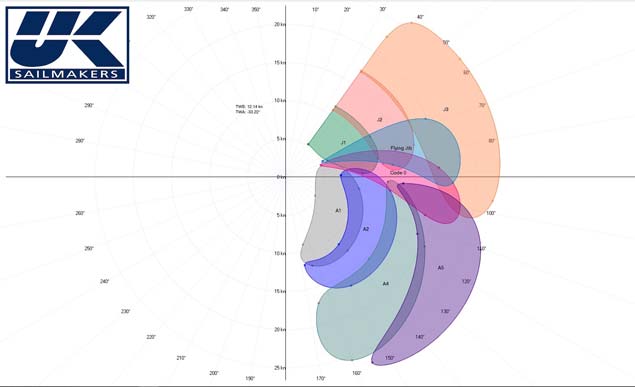
You can see the working angles of the Code zero and what it can do for your boat. It totally takes over when you are reaching and gives you the power you need. For overlapping boats then the chart is different the code zero becomes less useful as a working sail.
One of the great uses of the code zero is at night or offshore when you are racing. It’s an excellent tool when it’s too windy to hoist the kite. When you broach out you just furl the sail up and get back on the road.
Cruising
For cruising boats, this is an easy to use great power cruising sail. You can pull it out when it’s light and get the power you need. It’s easy to hoist and furl. You can use your electric winch to furl the sail as well. The same comes in a handy, ready to use bag, so it’s a plug and play sail.
All of the above details, like the cable and furler, still apply and it’s used exactly the same as a racing boat. The only difference is that it has a cruising size roach with 65 % leech hollow.
The sail is perfect for long passages and night cruising passages, when its’ not in use, you can leave it hoisted and unfurl it when you like. You can also add lightweight UV cover onto the leech of the sail and leave it up when not in use short term.
The angles of use for a cruising sail are a little more open as the sail has a hollow leech.
I normally hoist it on the dock and leave it up for the day when I am sailing and use it when it’s needed.
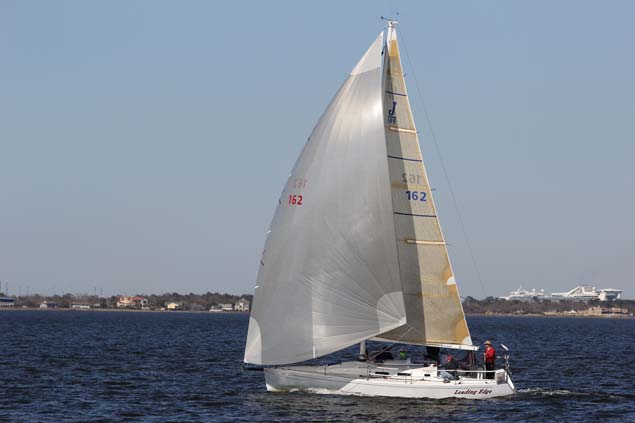
The working angles are from 60 to 120 degrees.
Barry Hayes is a sail designer and product development manager and owner of UK Sailmakers Ireland. He is a member of the Board of Directors UK Sailmakers International


























